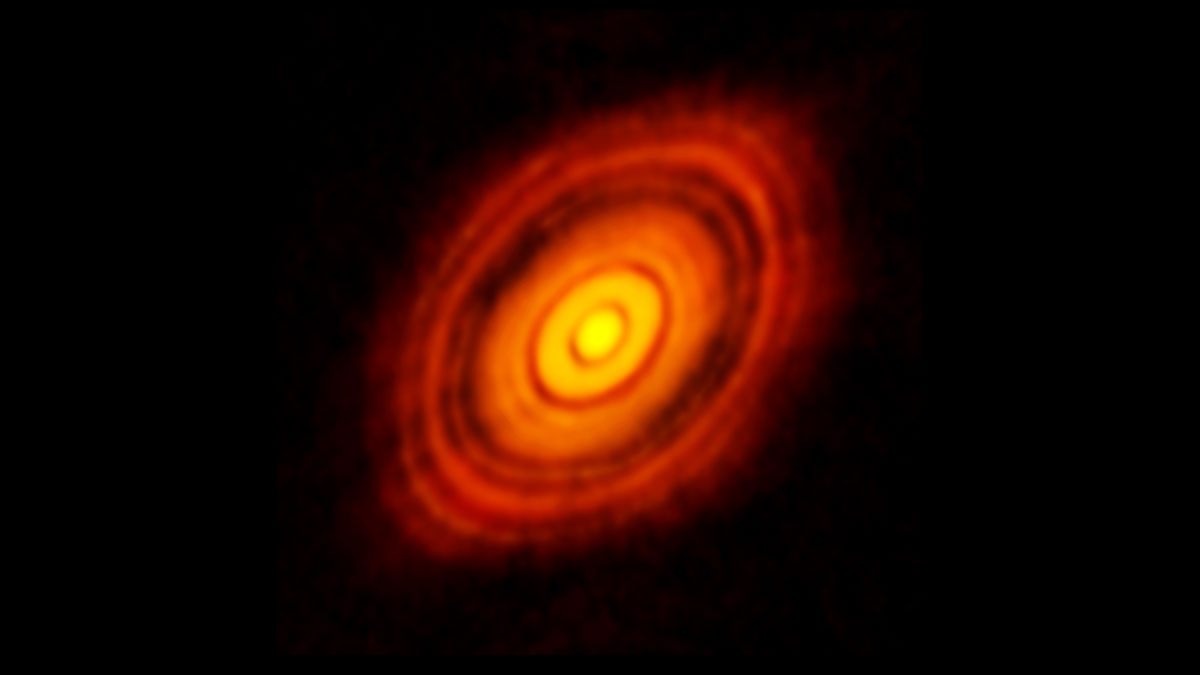To start forming a planet, you need a big disk of dust and gas…and a bit of oomph. We see this formation taking place in protoplanetary disks in young star systems, and the same process must have formed the planets in our own solar system, too.
How do you begin planet formation inside a disk? What is the oomph?
But how do you begin planet formation inside a disk? What is the oomph?
A new set of experiments led by Yin Wang at the Princeton Plasma Physics Laboratory (PPPL) in New Jersey suggests a process called magnetic rotational instability (MRI) may be a contributing factor. MRI describes how magnetic fields interact with the rotating, electrically charged gas in a star’s disk.
MRI has long been thought to play a role in disks by pushing charged gas toward young stars, which consolidate it in a process called accretion. This new research shows MRI can also trigger “wobbles” in the protoplanetary disk that begin the planet formation process.
Taking Metals for a Spin
Traditional ways of accreting dust in a young disk include pressure bumps, said Thanawuth Thanathibodee, an astrophysicist at Chulalongkorn University in Thailand who was not involved in the new research. The bumps are caused by processes such as “the transition between the gas phase and solid phase of some molecules…. When you have a pressure bump, you can accumulate more solid mass, and from there start forming a planet.”
Wang’s paper shows another way the accretion process might begin.
In his team’s experiments at PPPL, a cylinder was placed inside another cylinder, separated by about 32 liters (8.4 gallons) of the liquid metal Galinstan, the brand name of an alloy of gallium, indium, and tin. By spinning the two cylinders at different speeds exceeding 2,000 rotations per minute, scientists churned the liquid metal in a washing machine–like fashion, causing it to swirl through the cavity and mimic how gas swirls in a young star’s disk.
The team measured changes in the magnetic field of the Galinstan as it moved around the cylinders. They found that some regions of the liquid metal would interface, forming what are known as free shear layers. In these layers, some parts slow down and some speed up, a hallmark attribute of MRI.
In a protoplanetary disk, similar layers arise where different parts of the disk’s gas flow meet. These interfaces cause turbulence that pushes material (dust) toward or away from the star and create pockets where dust can accumulate and eventually form planets.
Wang said his work shows MRI-induced wobbling might be happening more often than expected, suggesting “there might be more planets across the universe.”
The work was published in Physical Review Letters earlier this year.
Building on a Successful Experiment
The contribution of MRI to protoplanetary disk formation was previously proposed but was not shown experimentally until now. As such, Thanathibodee said the new work is “very interesting.”
In future experiments, Wang hopes to try different rotation speeds to better understand the free shear layers and examine how MRI is produced. “We’ve found this mechanism is way easier [than thought], but the explored parameter space is still limited,” he said.
Still, MRI isn’t a slam dunk explanation for planet formation. To make the magnetic fields that MRI relies on, the central star must ionize the swirling gas in a protoplanetary disk into a plasma, a process that likely takes place near the star itself. But material close to the star quickly falls onto the star and thus is unavailable to make planets.
If the process instigated by MRI is encountered too close to the star, the researchers found, “the material will be absorbed,” explained Wang. “But if this mechanism happens away from the star, then it helps planet formation.”
MRI must work more quickly than the accretion timescale if it contributes to protoplanetary disk formation, but by how much?
“Nature is complicated, but what our results show is this instability is likely more common than we used to think.”
“My sense is that in order for some planets to form, this [MRI] process needs to be prolonged,” said Thanathibodee. “Otherwise, all the mass will get accreted in a short timescale.”
If MRI does occur in a “sweet region” not too close to or not too far from the young star, said Wang, it could play a role in planet formation. “It’s a plausible candidate for explaining a solar system like ours,” he said. “Nature is complicated, but what our results show is this instability is likely more common than we used to think.”
This same process might drive accretion around black holes too, said Wang, where magnetic fields are much stronger.
—Jonathan O’Callaghan (@astrojonny.bsky.social), Science Writer

